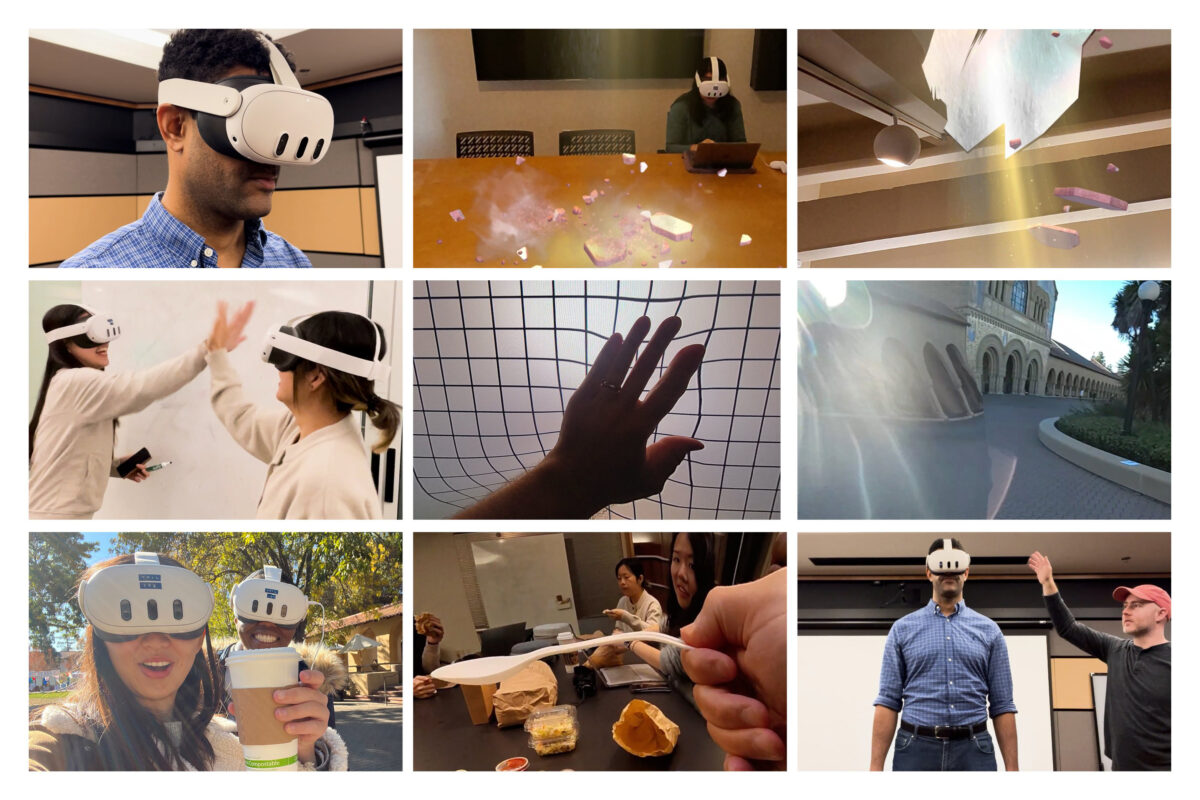Using headsets like Quest 3 and Vision Pro could have negative effects, finds new field study

What are the effects of long-term use of passthrough headsets such as Quest 3 and Vision Pro? Scholars are calling for more research.
Meta Quest 3 and Vision Pro show the world through cameras and screens. The headsets use sensors to capture the environment and reconstruct it as a digital video feed on opaque displays. This VR technique is called passthrough. Once the world is digitized in this way, it can be manipulated and augmented with virtual objects, which is known as mixed reality.
Besides passthrough headsets, there are optical headsets like Hololens and Magic Leap. These are transparent and project digital elements through a piece of glass into your eye, allowing you to see the real world in front of you.
Passthrough headsets eliminate some of the serious shortcomings of optical headsets, such as the narrow field of view, but they have their own drawbacks: the world becomes a video feed and loses much of its color, detail, and focal depth.
However, passthrough headsets will become the primary category of spatial computers over the next few years. The technology and mixed reality content will improve, and the devices will become smaller and more comfortable, which means they will be used more often and for longer periods of time.
But what does this actually mean for people who spend hours looking at the world through such a device and experiencing it as a video feed?
A new field study on video passthrough
Researchers at Stanford's Virtual Human Interaction Lab (VHIL) asked this question in a new field study titled "Seeing the World through Digital Prisms: Psychological Implications of Passthrough Video Usage in Mixed Reality". The VHIL has been researching the effects of virtual reality on humans since 2003 and is the world's leading research lab in this field.
"Millions of people will soon be spending hours each day relying on cameras and screens to show them the surrounding world. Apple, Meta and other companies are mass-producing headsets that block out light from the real world, and instead rely on passthrough video as an enabling technology for mixed reality," write the 11 authors of the field study.
The researchers each spent several hours wearing passthrough headsets in public and private settings, documenting their experiences with the technology. In addition, previous research on the psychological effects was reviewed and analyzed for the study. It should be noted, however, that Vision Pro was not used in this field study because the product has only recently been released.
Researchers call for caution
The authors conclude that while passthrough technology may be impressive and suitable for many applications, it may also have negative consequences, including visual aftereffects, lapses in distance judgments, simulator sickness, and "social absence".
"We recommend caution and restraint for companies lobbying for daily use of these headsets, and urge scholars to rigorously and longitudinally study this phenomenon," the authors write. Previous research suggests that long-term use of headsets has consequences, and there is no direct research on the issue of passthrough video, including its effect on children, the researchers warn.
The researchers suggest creating guidelines that restrict use, but are under no illusions. "Given that these strategies have failed epically with smartphones, we are not optimistic. If Apple and Meta create fantastic MR content that utilizes passthrough, people will most likely use it often."
Passthrough headsets can impede social interaction
Passthrough headsets could also have a negative impact on social behavior. "While physical safety is undoubtedly critical, scholars must also focus on social absence, the phenomenon of MR passthrough users feeling socially disconnected from physically co-present others. Based on past research as well as our field notes, one should not assume that the social presence of other people beamed in via passthrough is equivalent to face-to-face interaction," the researchers write.
Apple Vision Pro offers the best consumer passthrough quality yet, but it is far from perfect. In his review of Vision Pro, Verge editor-in-chief Nilay Patel wrote that passthrough may be a technological dead end, as the video feed doesn't come close to or replace natural vision, and may never do so. He also criticized the EyeSight display, which shows the user's eyes on external displays, for not allowing real eye contact with the outside world.
However, such technical shortcomings could be eliminated or reduced over time, as the VHIL researchers point out.
Note: Links to online stores in articles can be so-called affiliate links. If you buy through this link, MIXED receives a commission from the provider. For you the price does not change.